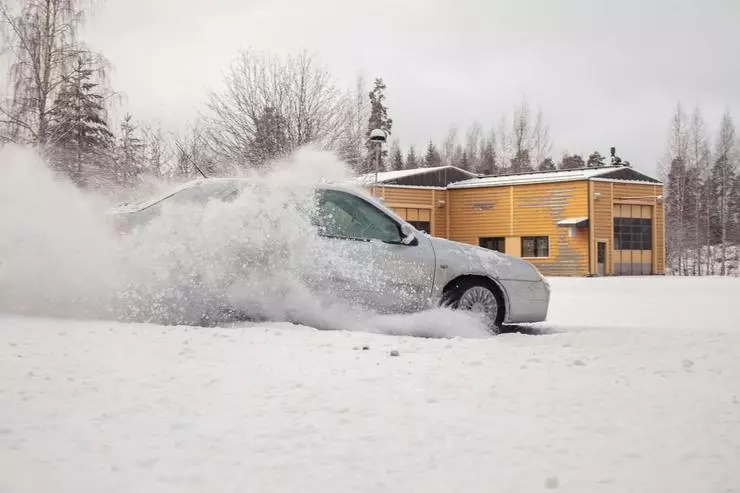As we have already mentioned earlier, most of the motorists prefer the models with "mechanics", as the operation of the "automat" requires large expenditures and it is not always possible to acquire exactly such an option. However, together with the choice in favor of mechanics on the driver's shoulders, the responsibility for secure management in difficult weather conditions is liable.
For what the neutral transmission is generally needed
If, for the most part, experts recommend to keep the car in transmission, then in the case of standing on the spot with the enabled clutch or during the towing it is necessary to set neutral transmission.
And yet many motorists go to "neutral" at high speeds, considering it a great way to save fuel, which actually has nothing to do with reality.
What happens on a slippery road?
Many, if not most of the car owners, believe that the front-wheel drive car is recommended to be kept under gas so that when performing a serious turn wheel, the wheels are tightly connected with the surface of the road. This opinion is quite relevant, taking into account the dangers of movement on the glaced road. If you choose a neutral transmission before departure to ice, there is a chance that you will encounter difficulties in management. The wheels at the neutral turned on are rotated without the participation of the power unit, which can lead to so-called wakes.

Wheels can be blocked on sharp turns
Photo: www.unsplash.com.
Wheels can get into the block
During the movement of the car in the ice when the "neutral" turned on, the wheels can easily be blocked. As a result, you will drive a good tent of meters as skiing, and well, if before and after you there will be no other cars. So that this does not happen, ABS activation is provided in modern auto models - when connecting the pads, the brake path increases. However, not cars are equipped with this system and easily can be twisted right in the middle of the road even with one locked wheel.
The reduced gear will help not encounter similar troubles, since the thrust allows the motor to turn the wheels regardless of the shocking the pads. It is a guarantee of experienced motorists advise to move the third or fourth transmission to move in heavy frost.
